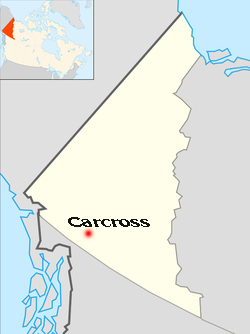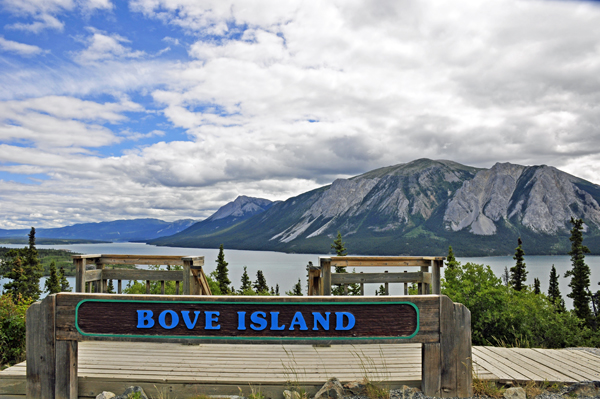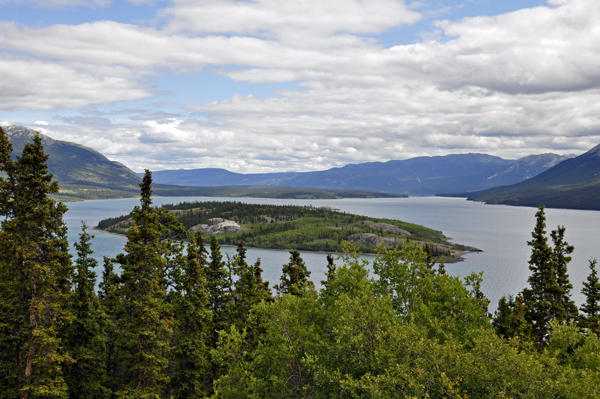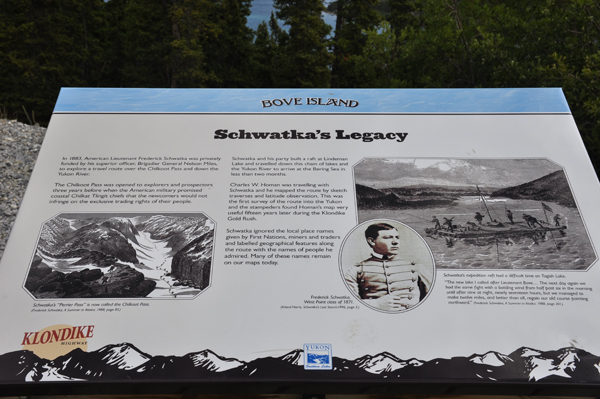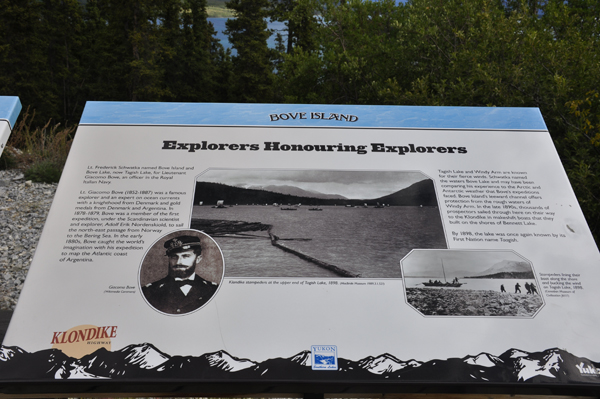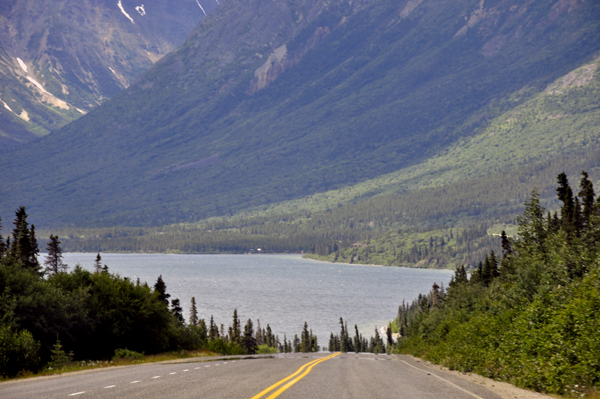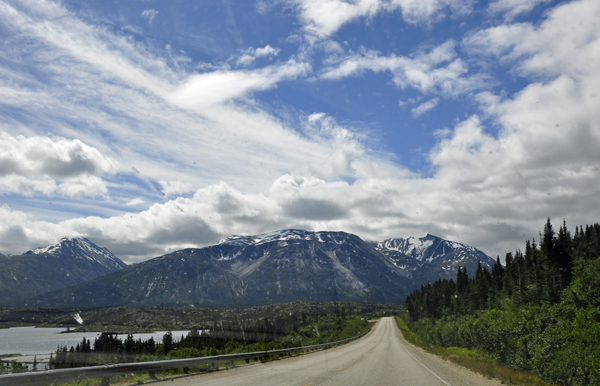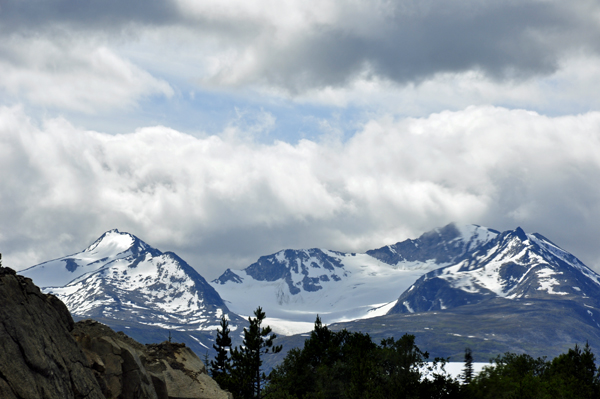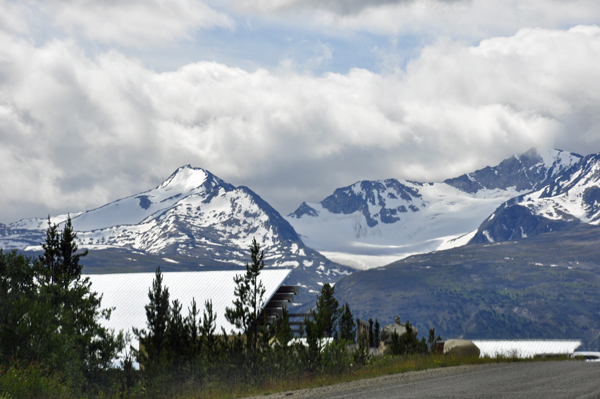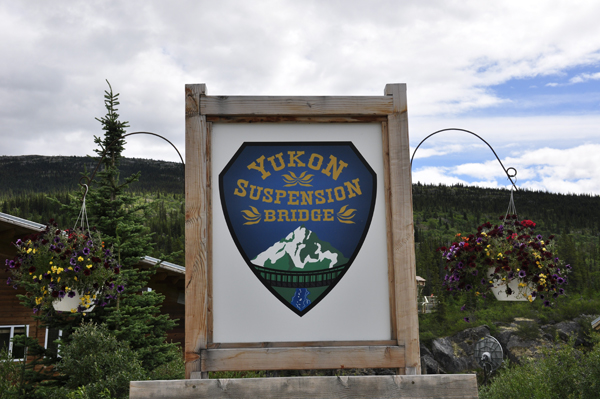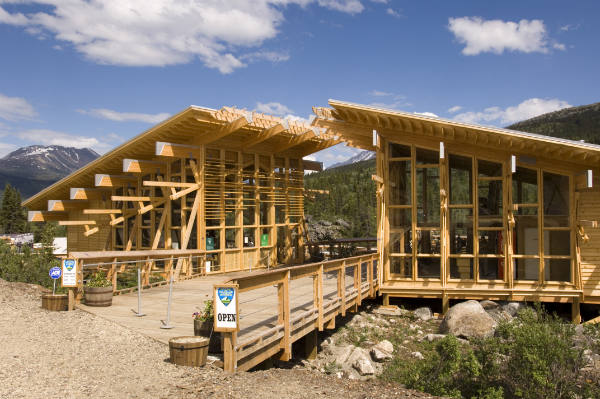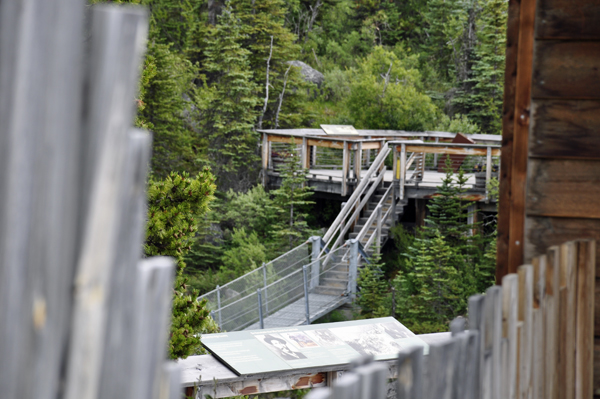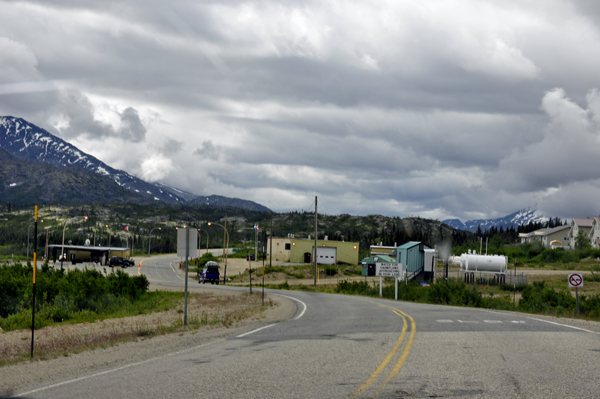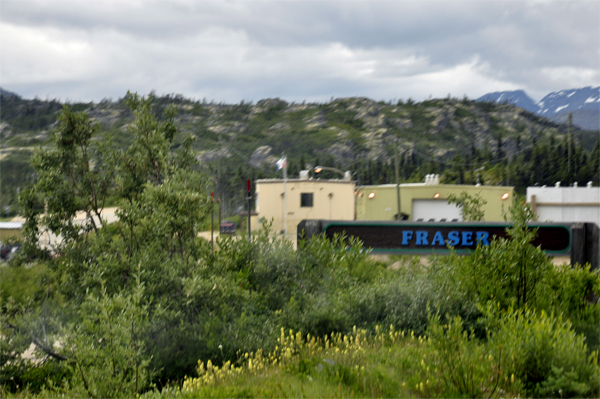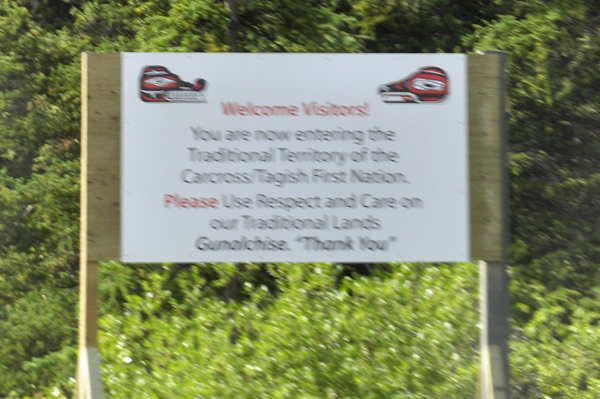 |
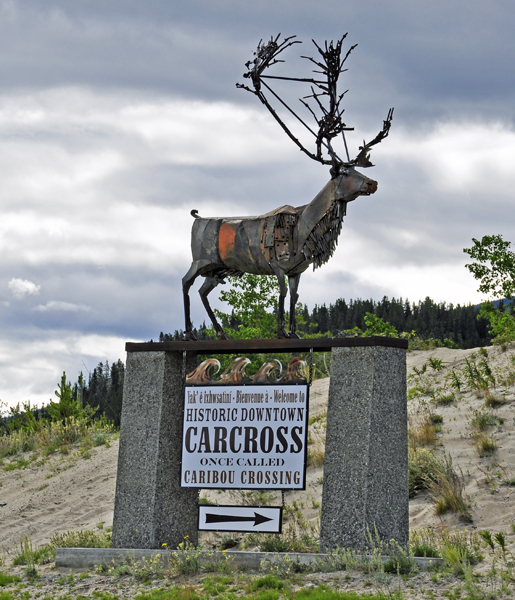 |
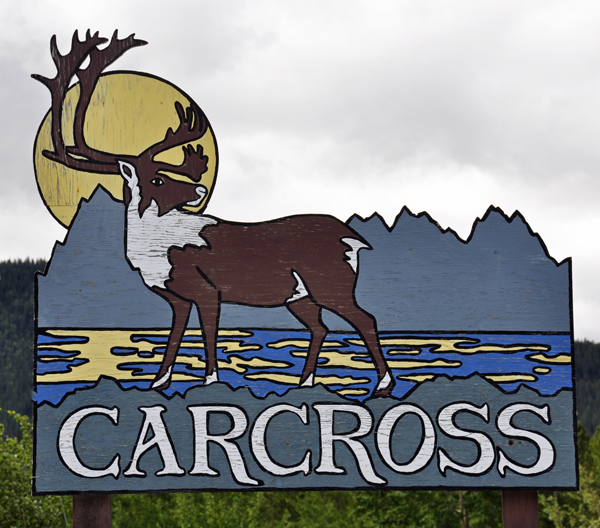 |
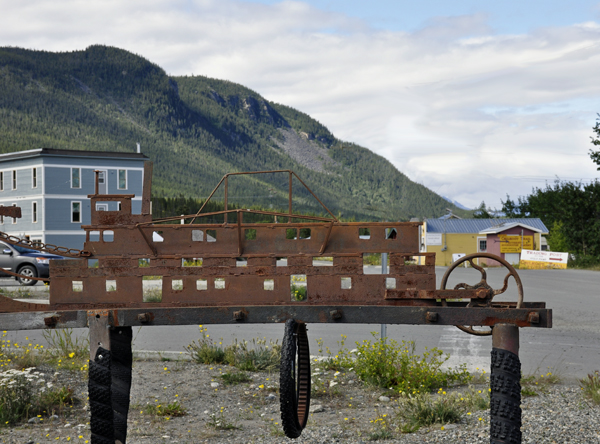 |
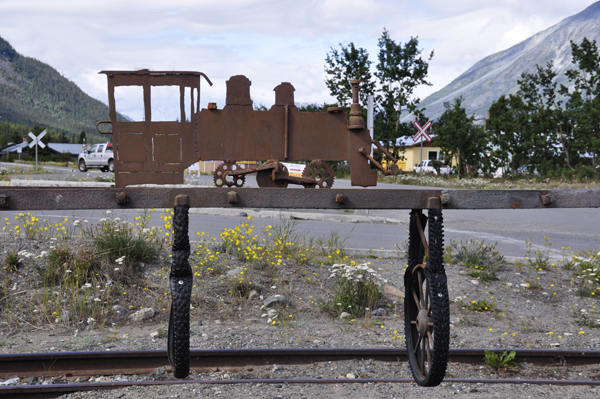 |
Carcross Commons and a tall totem pole, plus a bit of shopping - espresso, coffee and homemade goodies. |
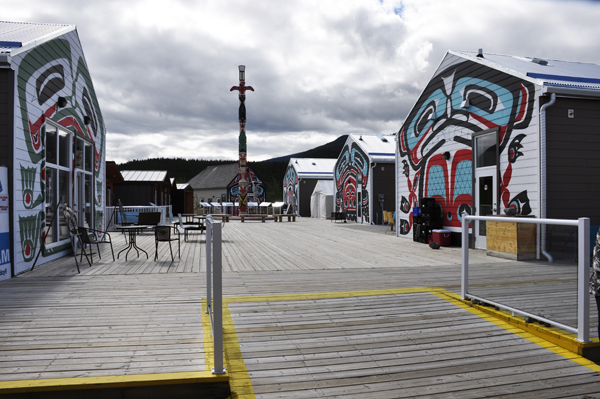 |
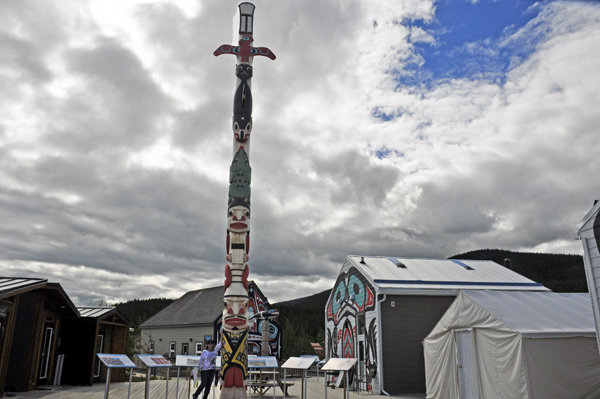 |
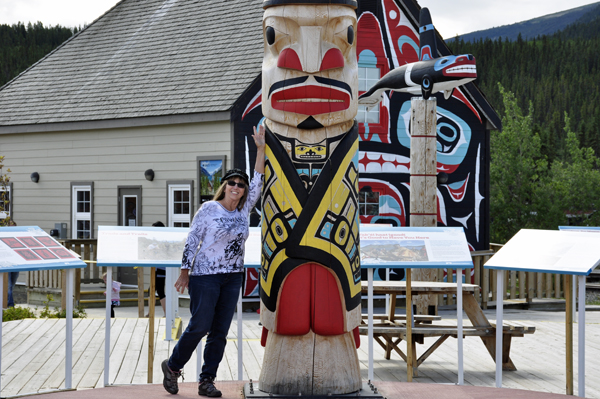 |
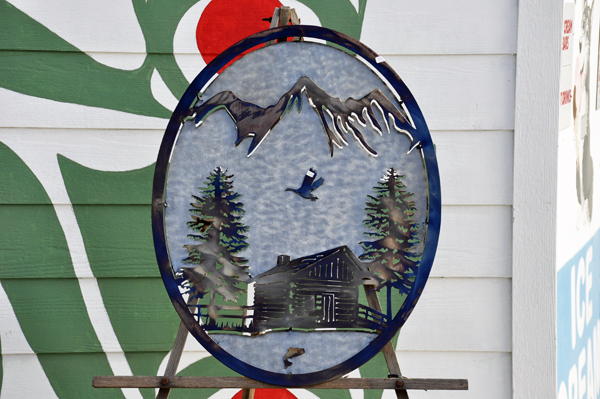 |
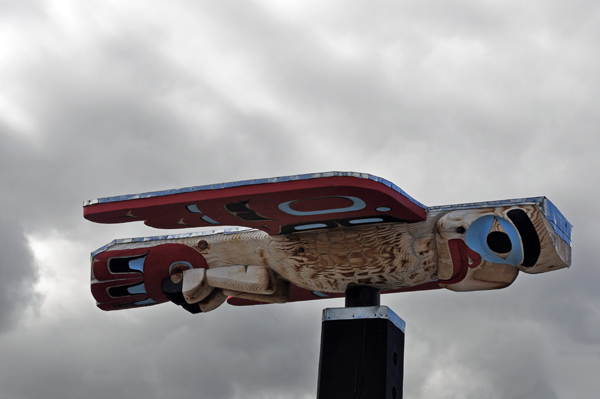 |
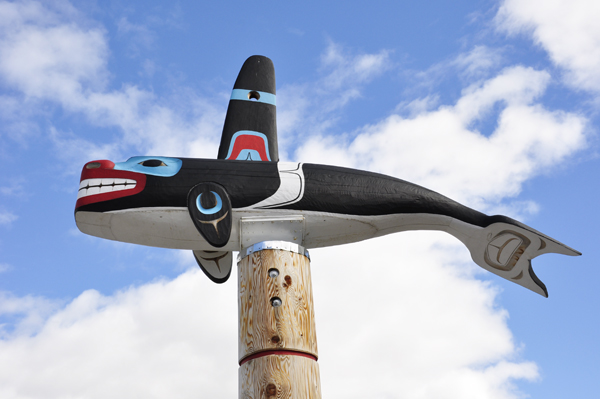 |
BELOW: The wooden hull of the sternwheeler Tutshi, which was
built in 1917. |
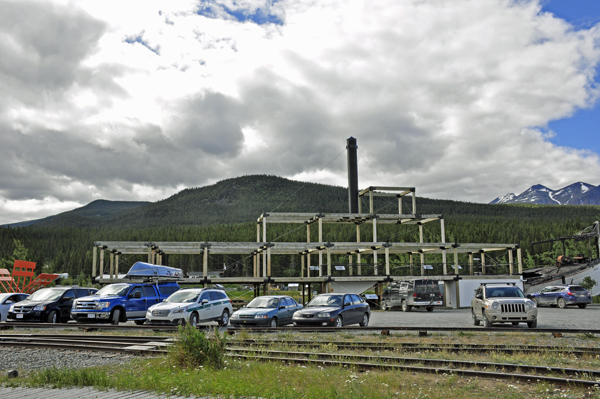 |
BELOW: Miniature replicas of the local buildings are on top
of a small building and serve as birdhouses. |
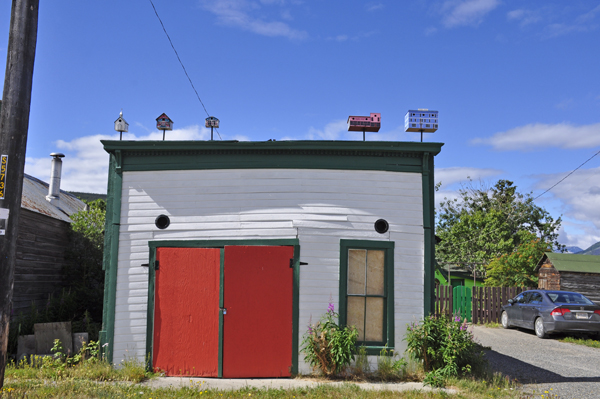 |
The Matthew Watson
General Store is one of Yukon's longest operating businesses. Following
a 1909 fire that destroyed much of downtown Carcross, the store was
reconstructed from two buildings moved to Carcross from the dwindling
mining communities of Conrad and Bennett. Matthew Watson, a prospector
who traveled over the Chilkoot Pass in 1899, bought the store in 1911.
He carried general merchandise and miner’s supplies, and outfitted hunting
parties. Watson and his descendants continued to operate the store until
1982, when it was purchased by Stan and Jean Tooley. When the Tooleys
took over, the store still contained elegant top hats in silk-lined
boxes and dusty jars of liniment promising cures for everything from
sprains to baldness. |
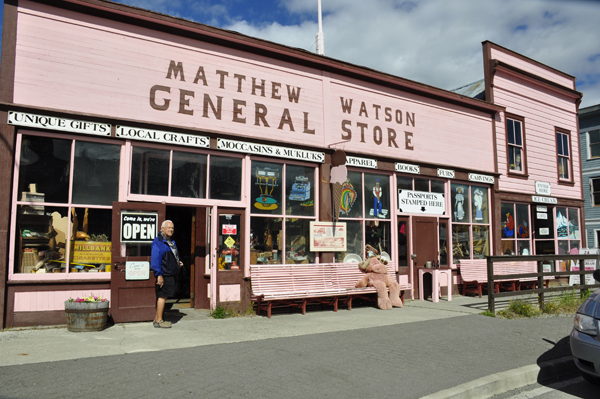 |
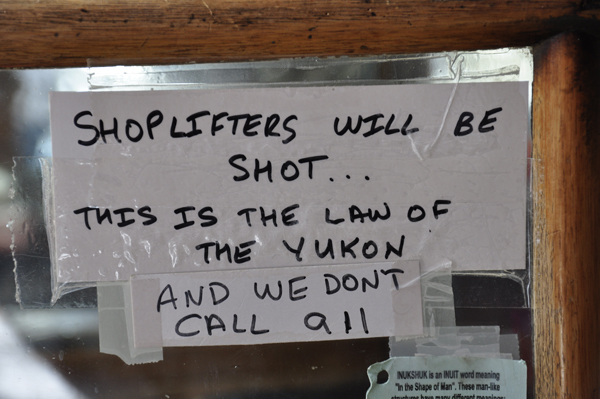 |
Below: The Caribou Hotel, dating to 1910, is one of the oldest buildings in The Southern Lake Region. The hotel was also known for Polly the Parrot who lived here from 1918 to 1972 and entertained the guests with his rendition of "I Love you Truly" and "Springtime in the Rockies. The Caribou Hotel is a designated Yukon Historic Site. |
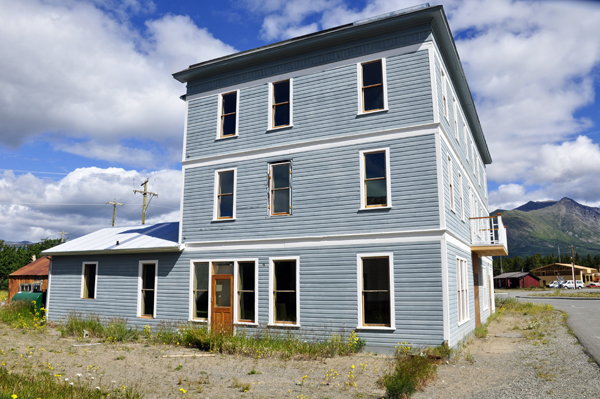 |
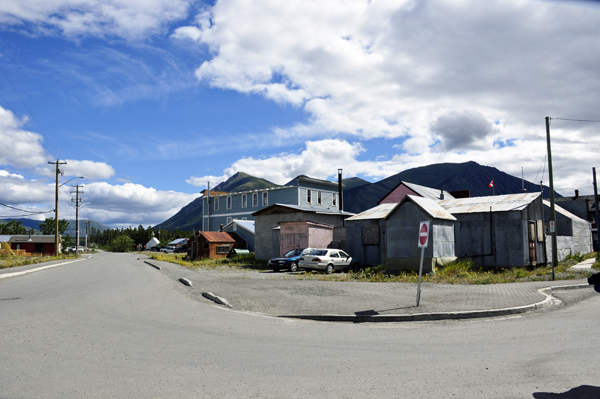 |
BELOW: Karen
Duquette made a new friend. |
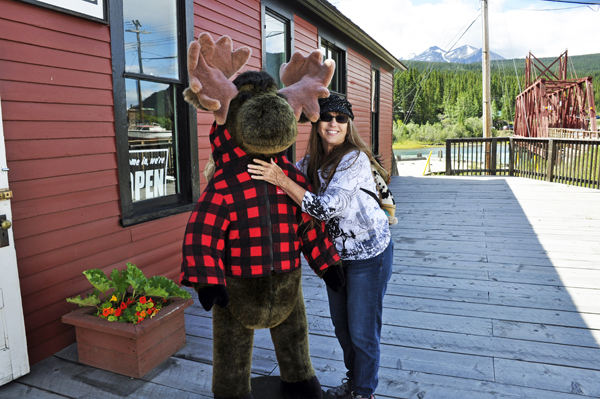 |
The two RV Gypsies walked on the $900,000 footbridge across the Nares River
and enjoyed the view of the TWO-mile-long fine sand beach at Carcross
(great for both views and fishing). |
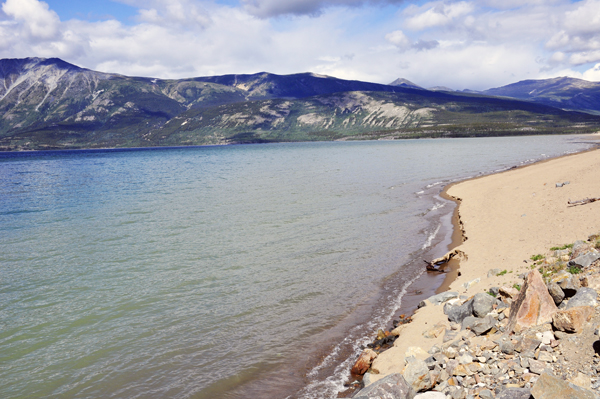 |
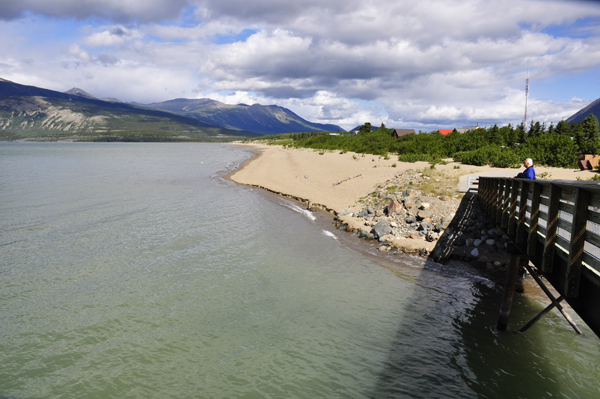 |
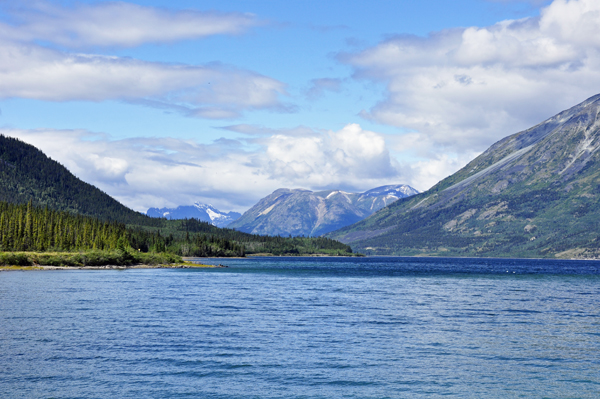 |
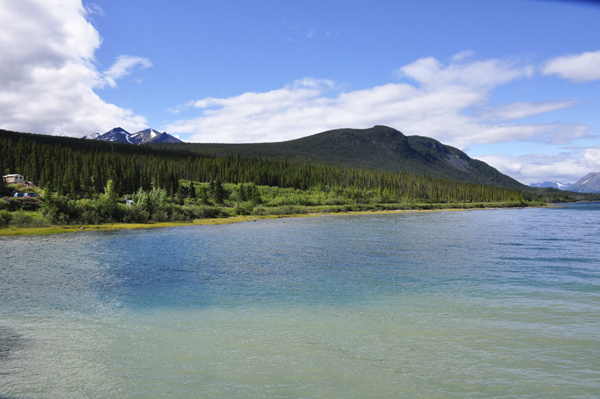 |
Bove Island : Carcross, Yukon, Canada |
Mile 59.0: Bove Island viewpoint - a large parking area with interpretive signs and a broad view down Tagish Lake, which flows into the Yukon River. During the Gold Rush, many boats were wrecked here when they came out of calm Nares Lake into high winds on Windy Arm. |
Bove Island is a sightseeing lookout destination located south of the community of Carcross on the Southern Klondike Highway in the Yukon Territory of Canada. The lookout provides some far reaching views overlooking the Windy Arm of Tagish Lake and Bove Island.
The lookout platform is easily visible from the highway. There is a small pull-out parking area, interpretive signs and a large wooden platform with rails and benches. The interpretive billboards explain the history of the region and assists in identifying local landmarks.
The Windy Arm of Tagish Lake was once part of a historic paddle route during the Yukon Gold Rush. Miners would arrive in Skagway, Alaska, USA and hike the Yukon Pass to Bennett Lake. From Bennett Lake miners would paddle Nares, Tagish and Marsh Lakes to the Yukon River and Dawson City.
From the lookout, perched on a rocky ridge, one can enjoy views of the lake and surrounding mountains. Mountains like Mount Conrad, Nares Mountain and Lime Mountain. The lookout is a good opportunity to view a portion of this historic route exploring Tagish Lake.
Prior to the Yukon Gold Rush the chain of lakes were used by the First Nation people of the Yukon. The local First Nation tribes of the Tlingit and Tagish paddled these same waters for many years hunting and establishing trade with neighboring villages.
The first non First Nation explorer arrived in the region in 1883. It was then that an American by the name of Schwatka was commissioned by the American Government to survey the transportation route leading to the Yukon River. Schwatka named the island Bove after a lieutenant in the Italian Navy. |
|
|
|
|
Mount Conrad
|
|
|
|
|
Mile 49.9: "Welcome to the Yukon"
and leaving British Columbia. Dall sheep and mountain goats are sometimes
seen on Dall Peak - up to 20 animals at a time is not uncommon, but
the two RV Gypsies did not see any wildlife. |
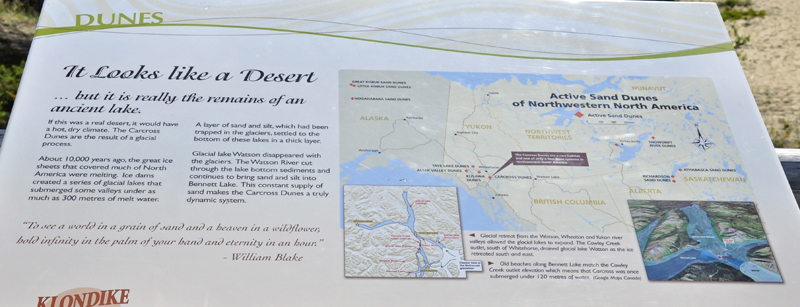
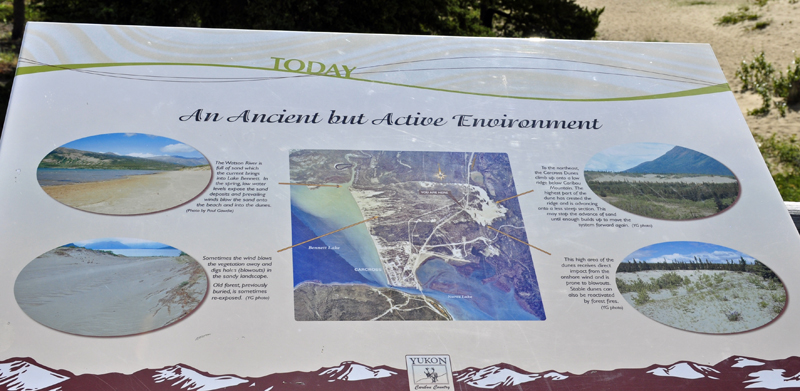
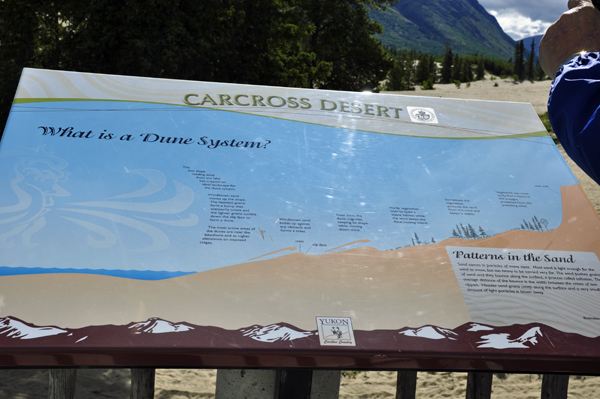
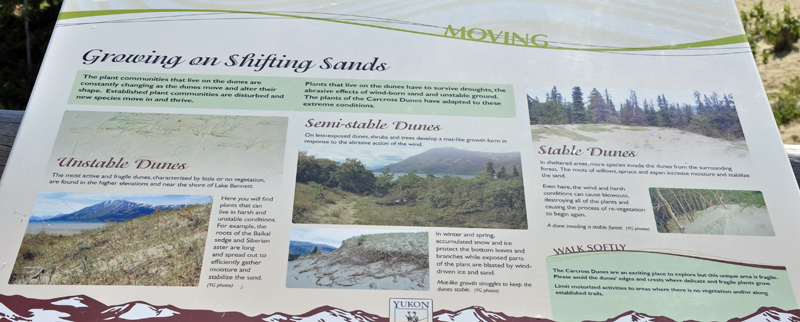
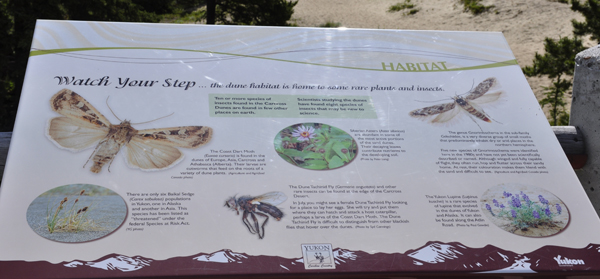
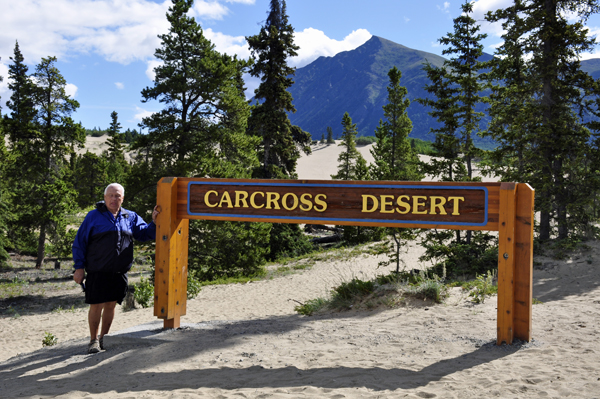
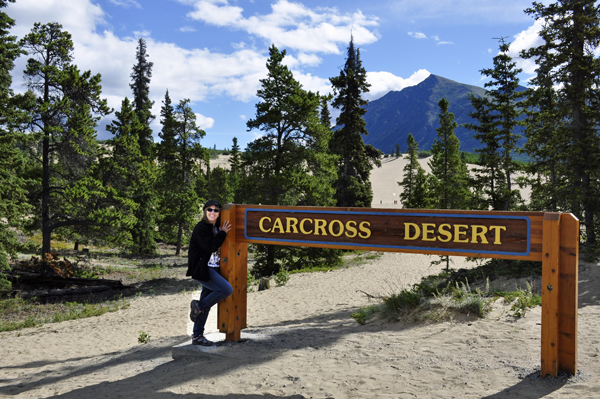
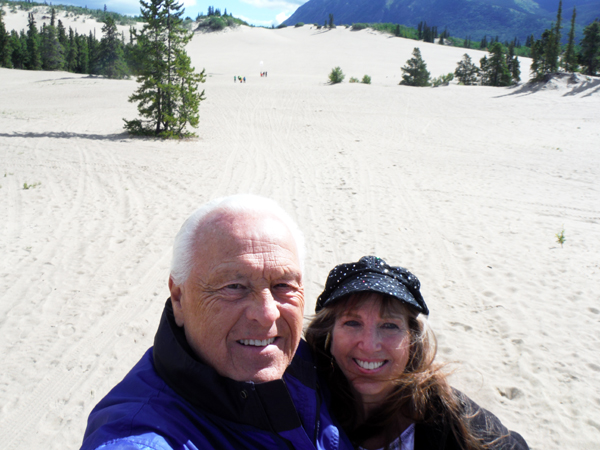
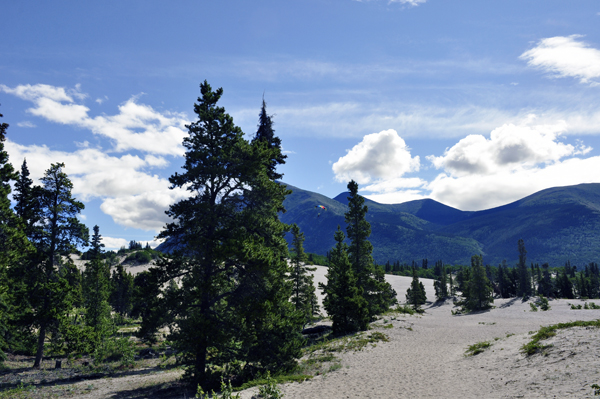
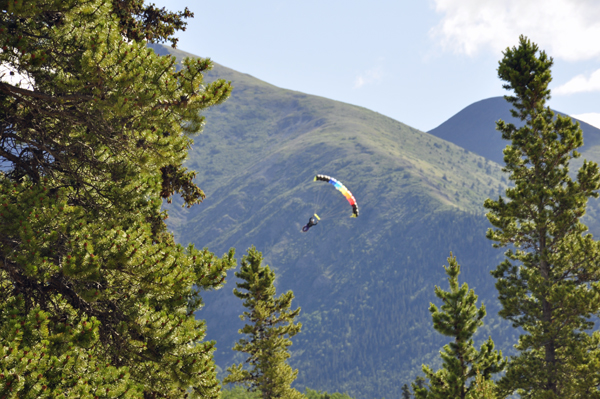
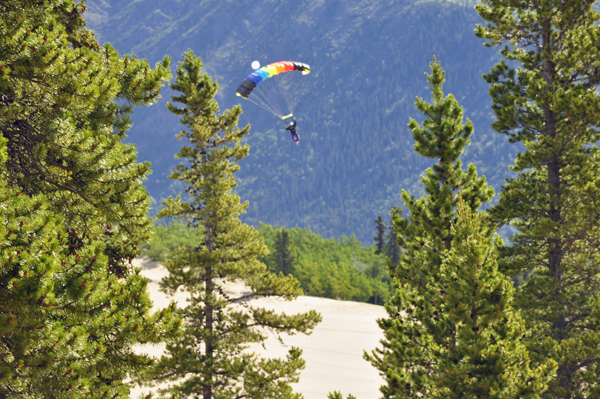
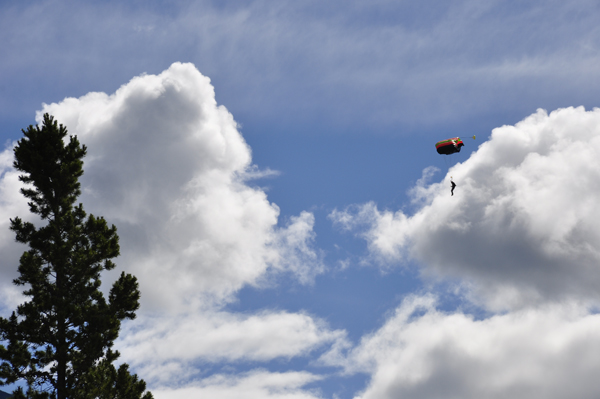
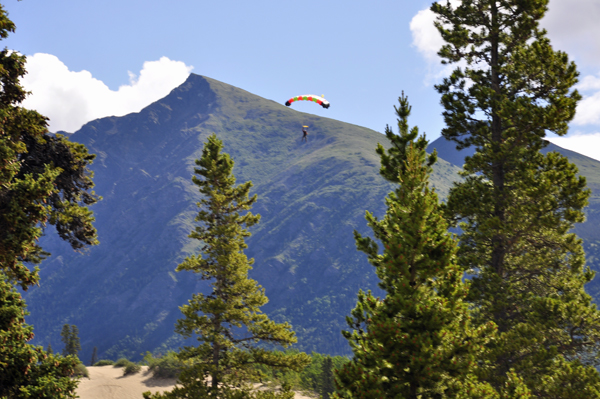
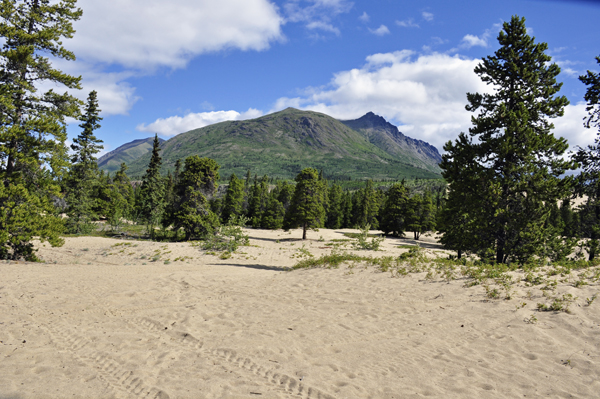
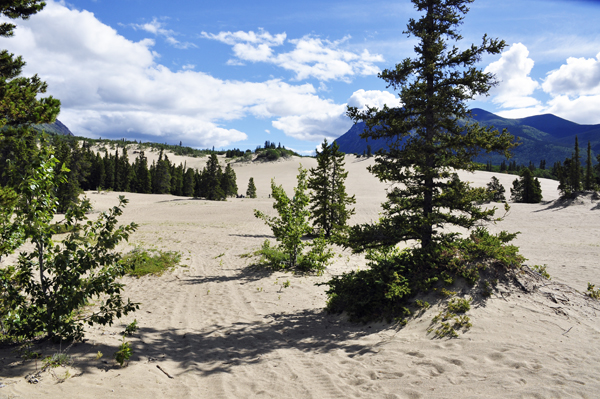
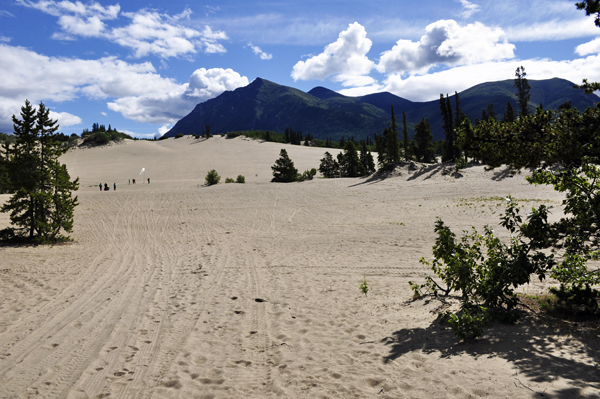
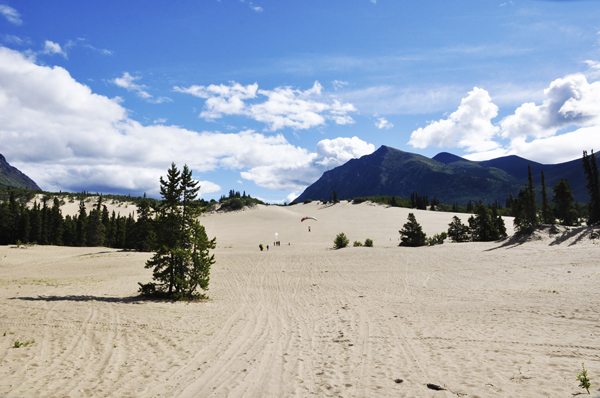
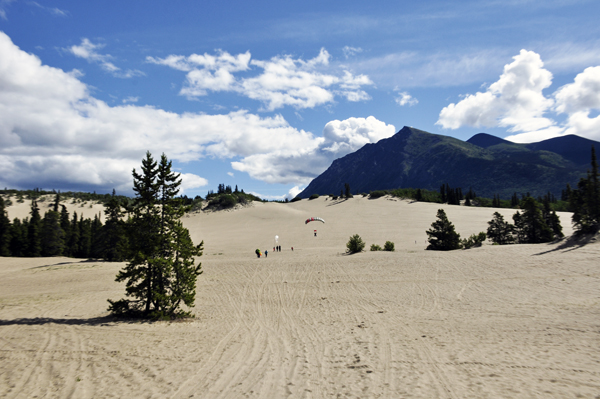
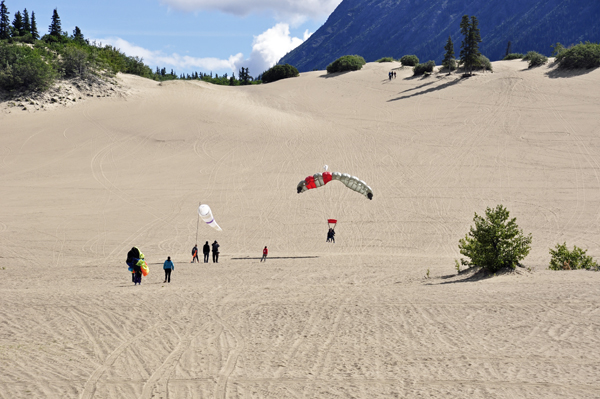
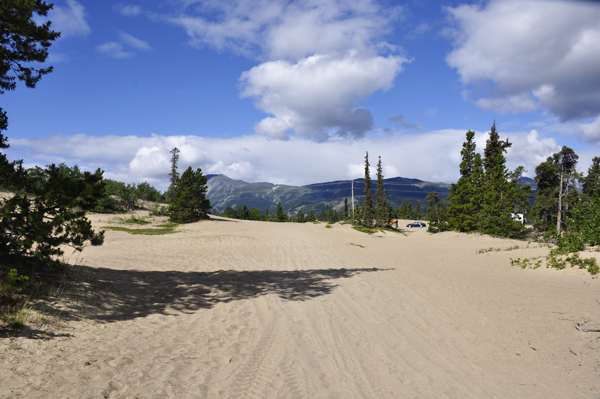
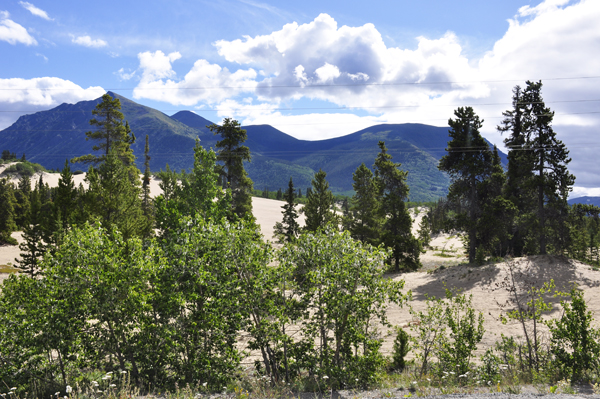
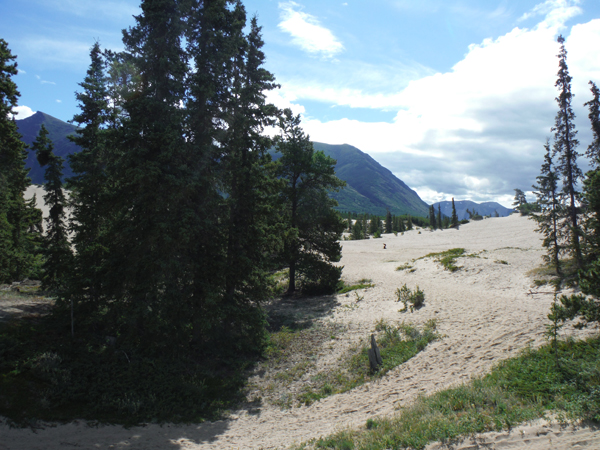
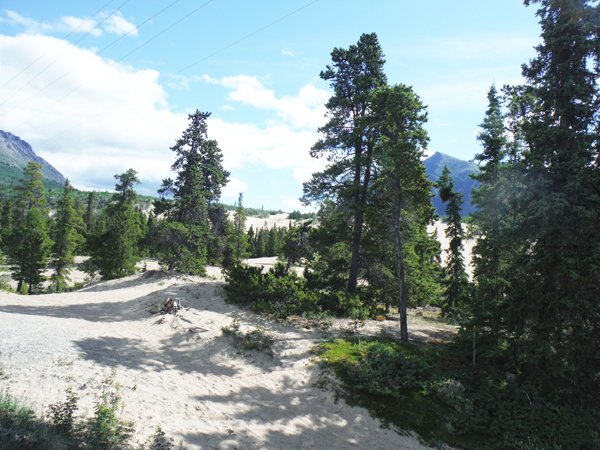
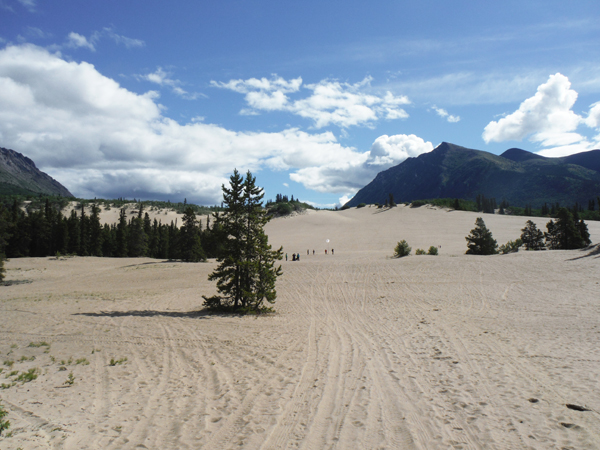


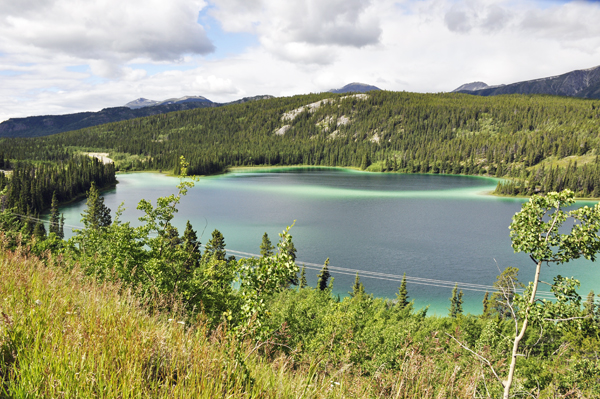
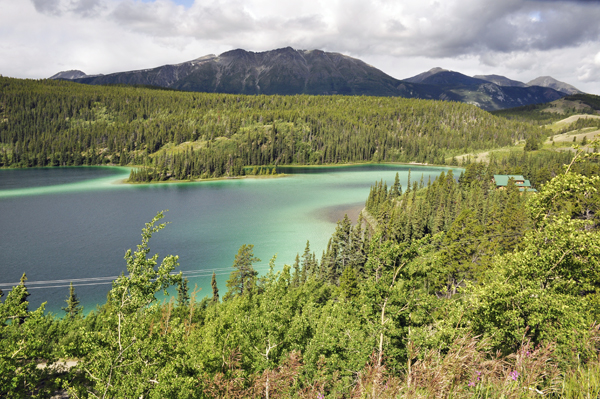
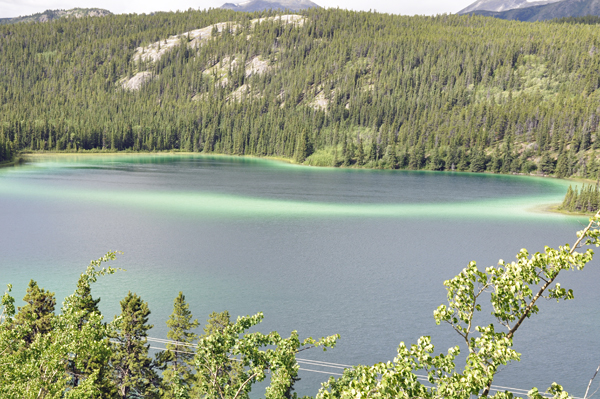
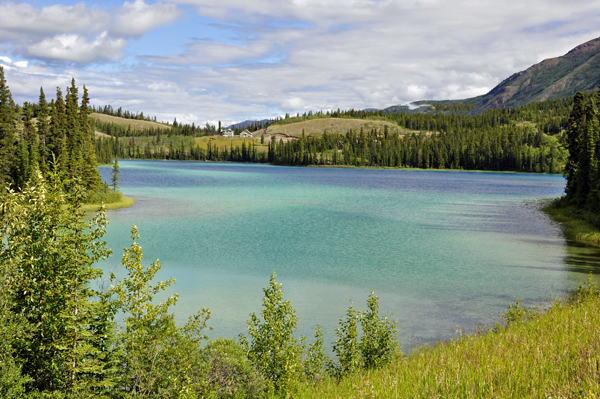
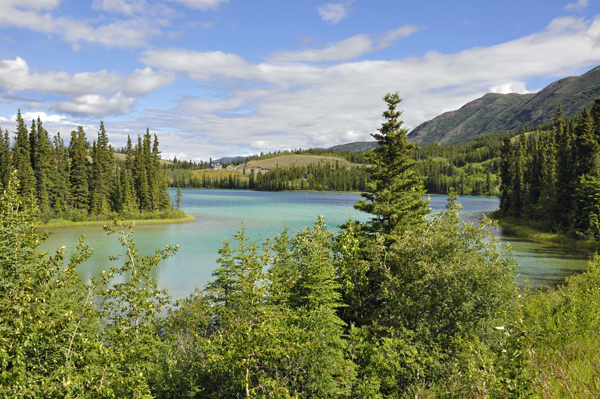
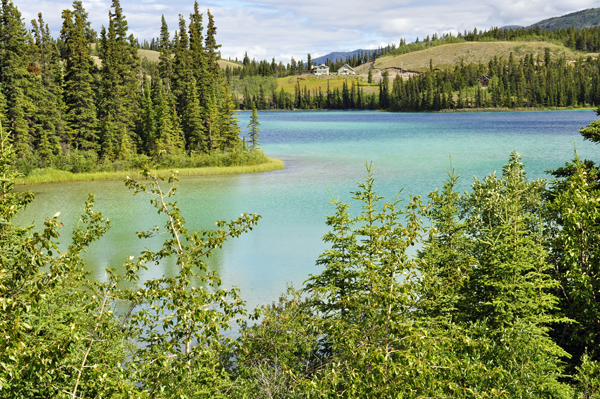
 Mile 65.6: Downtown Carcross, had 436 residents as of the December 2014 report. This is one of the oldest communities in the Yukon, first settled during the rush to the Klondike. On July 29, 1900, a Golden Spike was driven at the north end of the railway bridge to celebrate completion of the railway. Carcross became a major transportation hub during the 1920s, with significant railway, sternwheeler and aircraft traffic serving the southern Yukon and northern British Columbia.
Mile 65.6: Downtown Carcross, had 436 residents as of the December 2014 report. This is one of the oldest communities in the Yukon, first settled during the rush to the Klondike. On July 29, 1900, a Golden Spike was driven at the north end of the railway bridge to celebrate completion of the railway. Carcross became a major transportation hub during the 1920s, with significant railway, sternwheeler and aircraft traffic serving the southern Yukon and northern British Columbia.